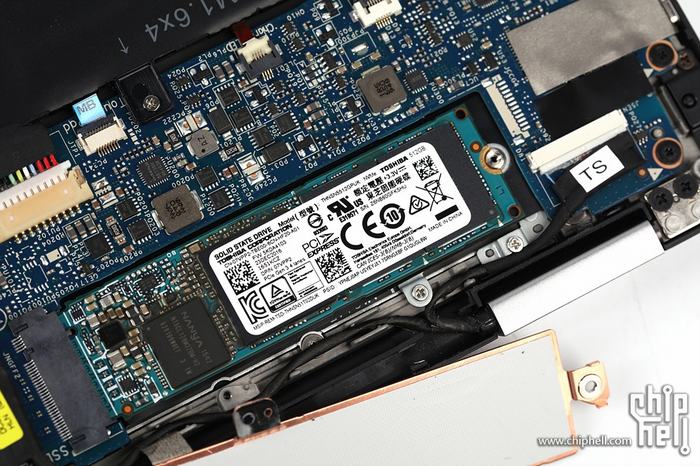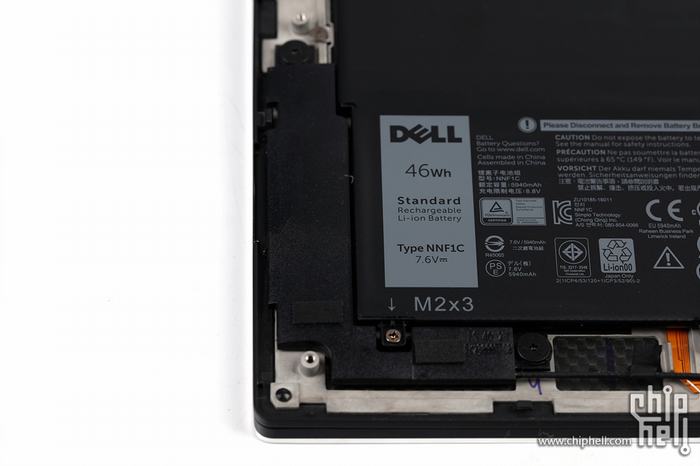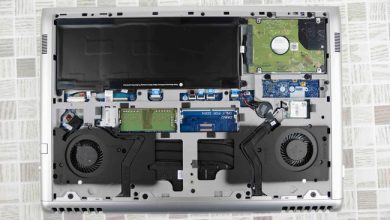The Dell XPS 13 9365 2-in-1 laptop follows in Intel’s footsteps and has been updated to seventh-generation processors I5-7Y54 and I7-7Y75. it’s available in two processor options with 8GB and 16GB of RAM, as RAM can’t be upgraded. You need to think carefully before buying. The Hard disk storage is available in 256GB and 512GB, and SSD can be upgraded independently. The display is available in FHD (1920×1080) and QHD+ (3200×1800), weighs 1.24 kg and is 13.7 mm thick.
Specifications:
Processor: Intel Core I7-7Y75
Graphics: Intel HD Graphics 615
Memory: 16GB, LPDDR3-1866MHz
Display: 13.3-inch 16:9, 1920×1080
Storage: 512GB SSD
Operating System: Microsoft Windows 10 Pro 64 Bit
Webcam: 720p HD
Teardown is what we do! Follow us on Facebook for the latest repair news.
Remove eight screws from the bottom case.

After opening the nameplate, you can see all kinds of information and certifications.
Remove the screw under the nameplate.

After removing all screws securing the bottom case, pry up the case with a guitar pick.
With the bottom case removed, you can access the battery, SSD, heat sink, speaker module, CMOS battery, and motherboard.

Dell XPS 13 9365 2-in-1 comes with a 7.6V, 46Wh, 5940mAh Li-ion battery, Dell P/N: NNF1C.

The SSD is covered with a copper plate to help with heat dissipation.
Remove two screws and remove the copper plate. You can access the SSD.

The Dell XPS 13 9365 2-in-1 has a Toshiba 512GB M.2 NVMe SSD, Dell P/N 07VPP2.

The heat sink is very large, and the right side is the chip area. The CPU, memory, and other parts are concentrated here, sharing a piece of copper heat.

The Intel Dual Band Wireless-AC 8265 is Intel’s 4th generation Wi-Fi adapter. It supports 802.11ac, Dual Band, 2*2 Wi-Fi, and Bluetooth 4.2.
The Wi-Fi module is soldered to the motherboard. If the Wi-Fi module fails, replacing it will be very difficult.
Source: chiphell.com








Can I use Samsung EVO 960 NVMe on it?
It must be 2280 size, right?
Yes, the Samsung EVO 960 should be compatible with the laptop.
Philip, did you install Samsung EVO 960 NVMe to your XPS 13 9365? Does it work???
Thanks for the guide! It looks like the copper heat sinks have corresponding shapes on the inside of the aluminum case. Do they make direct contact with each other? (Turning the outer case into a heat sink).
Do you think it’s worth applying thermal paste between the copper heat sink and the case or even between the copper heat sink and the chips below?
Thanks!
Usually, there is thermal grease between the copper heat sink and the chip, but it is not necessary to apply thermal grease between the heat sink and the bottom case.
thank you, David.
So are the heat sinks touching the bottom case? If not, I was thinking of getting thermal pads to improve the heat transfer.
Side note: It’s odd that the SSD still has the sticker. I would expect heat transfer to the copper heat sink to be badly affected by that.
The heat sink does not connect to the bottom case, so you do not need to apply the thermal grease. If you really care about the heat, just buy a cool pad.
Hello,
I’m considering buying an XPS 2-in-1, but I will need a 2 TB SSD. Is there a 2TB SSD available for the XPS? If so, Can you link a couple for me?
Hello
I recently bought the XPS 2-in-1 9365 a few days back. Last night, it was accidentally knocked down, It’s a long story. The screw that tightened the top right edge of the laptop popped out as a result of the fall, and immediately, the screen went blank. At first, the laptop does come on with a dead screen, but now the power button does not even work anymore. Any HELP will be greatly appreciated.
Great guide!
My motherboard died, and it was an i5 with 8GB of RAM. Should I consider upgrading to an i7?
Is it worth it?
Do you see any issues or incompatibilities?
I would do it all myself, of course.
Thanks a lot.
Very grateful for the well-crafted steps! 🙂 🙂